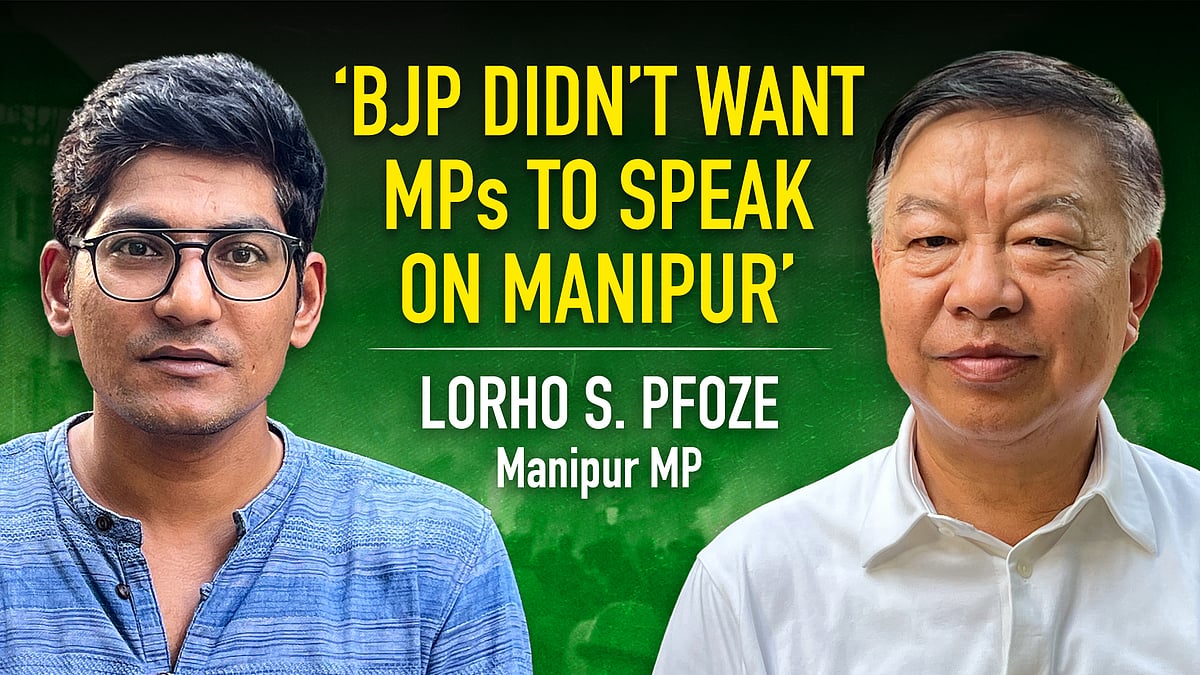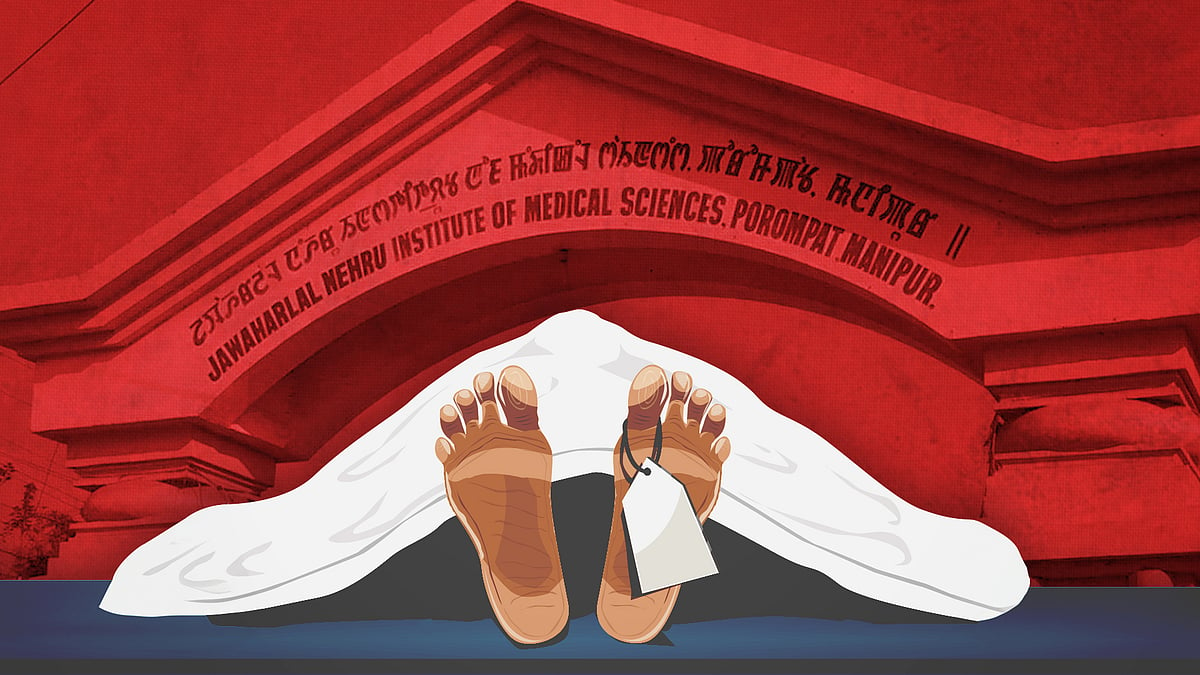Kuki groups demand union territory similar to Puducherry, file ‘sent to Amit Shah’
A ‘charter of demands’ was submitted during talks between the groups and the union home ministry.
During their ongoing negotiations with the union home ministry, Kuki-Zo militant groups demanded a union territory similar to the administrative setup of Puducherry.
Newslaundry learned that the groups, which signed a ceasefire agreement with the Manipur and central governments in 2008, believe a separate administration for their community is the only way to resolve the unrest between Meiteis and Kukis in Manipur.
Since the violence began in Manipur in May, over 170 have died while thousands were displaced. The Kuki-Zo communities have been demanding separate administration for five districts: Churachandpur, Kangpokpi, Chandel, Tengnoupal and Pherzawl.
In Delhi, four rounds of talks took place on July 16, August 17, August 31 and September 1. The talks were between the home ministry’s northeast advisor AK Mishra and the Kuki National Organisation and United People’s Front. The KNO and UPF are umbrella militant groups that encompass 19 outfits in total – the KNO comprises 11 and the UPF eight, according to the 2008 Suspension of Operations agreement.
Both groups submitted a “charter of demands” during their last meeting with Mishra on September 1, two sources privy to the discussion told Newslaundry. It’s not clear when the next meeting will take place; one of the sources said it was delayed due to the G20 summit and special Parliament session this month.
“The file has been forwarded by Mishra to home minister Amit Shah,” said the source.
The other source said, “We want to be directly governed by the central government. It could be a lieutenant governor with a provision for a council of ministers, similar to Article 239A in the Constitution.”
Article 239A, inserted after the 14th constitutional amendment, deals with the creation of Puducherry. Puducherry is the only union territory other than Delhi with an elected government.

Another reason why the Kuki-Zo groups referred to the Puducherry model is because the five districts that would require a “separate administration” are not contiguous. Tengnoupal and Chandel are in the east and south-east of the state while Kangpokpi is closer to the centre. This had been discussed by Kuki MLA Paolienlal Haokip in an interview with Newslaundry in July.
Similarly, Puducherry comprises four districts that are not geographically located together. They are scattered in areas abutting Tamil Nadu, Kerala and Andhra Pradesh. For context, Puducherry district on the east coast is 600 km away from Mahe district on the west coast.
One of the sources noted the central government’s delay in finding a political solution.
“The courts can take suo motu action [in cases of injustice]. The government should also do the same,” they said. “It’s been almost five months since the violence. The central government has to find a political solution. If the centre does not help, what’s the point of existing?”
The source added that the separate administration was “not a matter of concession but a necessity”.
Importantly, the source said the Kuki insurgent groups always had demands – but these demands shifted once the violence began in May. They said the home ministry had “orally agreed” to an autonomous territorial council for hill districts under the Sixth Schedule of the Constitution.
“A final approval was to come on May 8,” the source alleged. But the discussion fell through when the violence began on May 3.
Claims by Nagas
However, the Kukis’ territorial claims overlap with areas claimed by Nagas.
According to the source, of the 10 hill districts in Manipur, “five are dominated by the Kukis and the rest by Nagas”. “If the Nagas want to be part of such a union territory, they are welcome,” they said. “Or they can seek another UT for their five districts.”
Of the five districts eyed by the Kuki-Zo community, Nagas claim three of them: Kangpokpi, Chandel and Tengnoupal.
“Except Churachandpur and Pherzawl, Kukis cannot claim Kangpokpi, Chandel and Tengnoupal as part of a separate administration. These are originally Naga territories,” said a spokesperson of the Government of the People’s Republic of Nagalim.
The GPRN is a parallel government run by the National Socialist Council of Nagaland (Isak-Muivah), an extremist group, in Nagaland. It has been demanding the sovereign state of Nagalim, which would comprise areas dominated by them in Assam, Arunachal Pradesh, Manipur, and part of Myanmar. Members of the group have been holding peace talks with the central government since a framework agreement was signed in 2015.
In 2016, the Nagas had criticised the Manipur government’s move to form seven new districts, taking the total to 16. United Naga Council general secretary Ayo Shatsang said: “We don’t recognise the new districts such as Tengnoupal, Kangpokpi, Noney, etc.”
The UNC is the apex Naga body in Manipur. Satsang claimed that most of the new districts had been carved out of Naga-dominated districts such as Senapati and Ukhrul.
While the GPRN spokesperson was vague as to whether the Nagas had been consulted by Mishra or the home ministry over the Kuki’s “charter of demands”, they said: “We have made our stand very loud and clear – that we are not opposed to the Kuki demand for a separate administration. But not an inch of Naga territory should be touched.”
Newslaundry called and messaged Mishra for comment. This report will be updated if he responds.
Reports like these take time and resources. Help us tell more stories that are in public interest. Subscribe today.
 NL Interview: Manipur Naga MP on NDA leaders’ silence, state machinery’s failure, Kuki-Zomis demands
NL Interview: Manipur Naga MP on NDA leaders’ silence, state machinery’s failure, Kuki-Zomis demands  Manipur violence: 53 bodies – mostly Kukis – lie unclaimed at two Imphal hospitals
Manipur violence: 53 bodies – mostly Kukis – lie unclaimed at two Imphal hospitalsNL Digest
A weekly guide to the best of our stories from our editors and reporters. Note: Skip if you're a subscriber. All subscribers get a weekly, subscriber-only newsletter by default.
